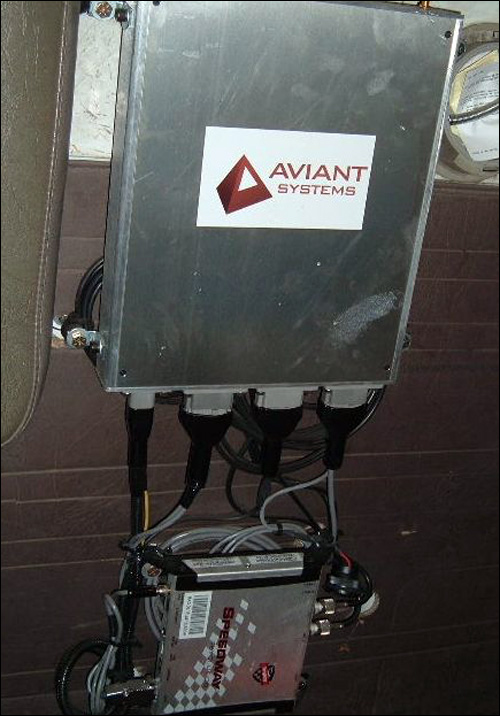Sanico, a provider of recycling and garbage-collection services in northwestern New Jersey, has seen a rise in the recycling rates of its customers, thanks to the use of a radio frequency identification system that rewards participating residents by reducing their waste-removal bill. The company is employing an Aviant Systems solution consisting of passive ultrahigh-frequency (UHF) RFID tags affixed to recycling canisters, a reader on each of its recyclables collection trucks, and an onboard computer that interprets read data and then forwards that information to Aviant’s server via a cellular connection.
Sanico picks up trash (both recyclable and non-recyclable) from approximately 15,000 residences throughout the state’s Warren, Sussex and Hunterdon counties. While the money it receives for bottles and cans is only enough to cover Sanico’s cost of collecting and delivering those recyclable materials to a buyer, the firm is able to make a small profit by selling paper, typically at a rate of $70 to $80 per ton. When collecting recyclables, Sanico separates paper from the bottles and cans, and then delivers the materials to buyers. This practice differs from the single-stream recycling model, used in many communities, by which all paper, plastic and glass are commingled during the collection process and are sold to at a single location, known as an intermediate process facility (IPF), which sorts the various materials. Selling recyclables to an IPF tends to result in the hauling company not being paid for any of the materials. That’s because the receiving IPF must pay personnel to hand-sort the materials.

Sanico provides its customers with two recycling bins: one for paper, the other for metal cans and plastic and glass bottles. The company wanted to encourage customers to recycle more, and to share in the resultant savings. Jim Smith, Sanico’s general manager and founder, knew Aviant Systems’ president, Henry Bonnell, and began discussing with him several years ago about how RFID technology might enable him to track when each customer recycles, and to then reward that resident accordingly. Although some larger businesses provide rewards in the form of coupons that users can access online (see RFID Helps Reward Consumers for Recycling), Smith sought to make the rewards more direct, by simply paying the customers about 25 cents for each recycling bin put out for pick-up.
Initially, Sanico installed the Aviant Systems solution on two of its seven trucks and provided RFID labels on recycling bins for some customers, and then tested the technology for about one year. The system was working well, the company reports, so during the past few months, Sanico installed readers on all seven vehicles. It soon plans to provide RFID-tagged bins to all interested customers. Currently, the RFID-based bins have been offered to around 5,000 of the company’s 15,000 customers, about 2,000 of whom have signed on to the RFID-based recycling program to date.
Each truck is fitted with an Impinj Speedway Revolution reader in the cabin, connected to a mobile computer provided by Aviant with a GPS unit and a 3G cellular connection. Two RFID antennas are installed in the back top of the open-top truck. Each 20-gallon recycling bin has a 4-inch by 2-inch adhesive label containing an Alien Technology Squiggle tag, made with a Higgs3 chip. The label is printed with Aviant and Sanico logos and a bar-coded ID number, and is covered with a laminate. The tag is affixed to the front of the canister, beneath the lip, to protect it from adverse weather.
Each tag is encoded with a unique ID number linked to the customer’s ID in Aviant’s software, residing on Aviant’s server, as well as on the onboard computer. When a recycling truck visits a house, a Sanico worker picks up a bin and manually dumps it into the back of the vehicle, at which time its RFID tag ID is captured and sent to the onboard computer. The number is then matched to the GPS data, and is forwarded to the server every few hours via the 3G connection, along with the truck’s location.
The details of which bins were emptied are transmitted to Sanico at the end of every day. The company downloads the data into its own billing software, in order to calculate the credits for each participating customer.
Smith says he faced several challenges related to the technology’s use aboard his trucks. For one thing, he initially tried utilizing a different RFID reader (not from Impinj), but says he found that the device struggled with the large number of tag reads during the route. The interrogator was reading not only the EPC Gen 2 passive UHF tags on the bins, but also various other tags attached to nearby recycling containers, as well as labels attached to discarded cardboard boxes inside those bins. According to Bonnell, Aviant thus replaced the reader with the Speedway Revolution model, which offers filtering capabilities to eliminate the excess reads. Aviant encoded each tag with a 10-digit ID number that began with a specific sequence of numbers identifying them as Sanico tags. All other tag IDs were filtered out before the collected data was forwarded to the onboard computer, he explains. To prevent readers from capturing the IDs of other nearby Sanico recycling containers, Aviant adjusted the device’s settings to only interrogate tags when the bins were raised to the level of the antennas, to be dumped into the trucks.
Smith says he believes the technology is increasing the amount of recycling. “I know that each month, the number of credits is increasing,” he states. However, he adds, it is still too early to determine how much the recycling rate has grown, and the extent to which this is due to the use of RFID.

